Calculate Out-The-Door Price
close
Alignment
When your tires are properly aligned, your vehicle drives straight and your ride feels smooth. But when your tire alignment is off, then your whole vehicle feels off.
Poor tire alignment causes your vehicle to veer to one side or the other, even on a straight and level road. This can cause your tires to wear out faster and affect your car’s responsiveness—ultimately putting your safety at risk!
So, when do you need a tire alignment? If you experience any veering or notice uneven wear on your tires, the answer is immediately.
Otherwise, the general rule for when you should get a tire alignment is once per year. But that doesn’t apply to every vehicle.
Many situations can influence how often you should get a tire alignment. If you can answer "yes" to any of the following questions, it’s probably time to schedule a tire alignment sooner rather than later.
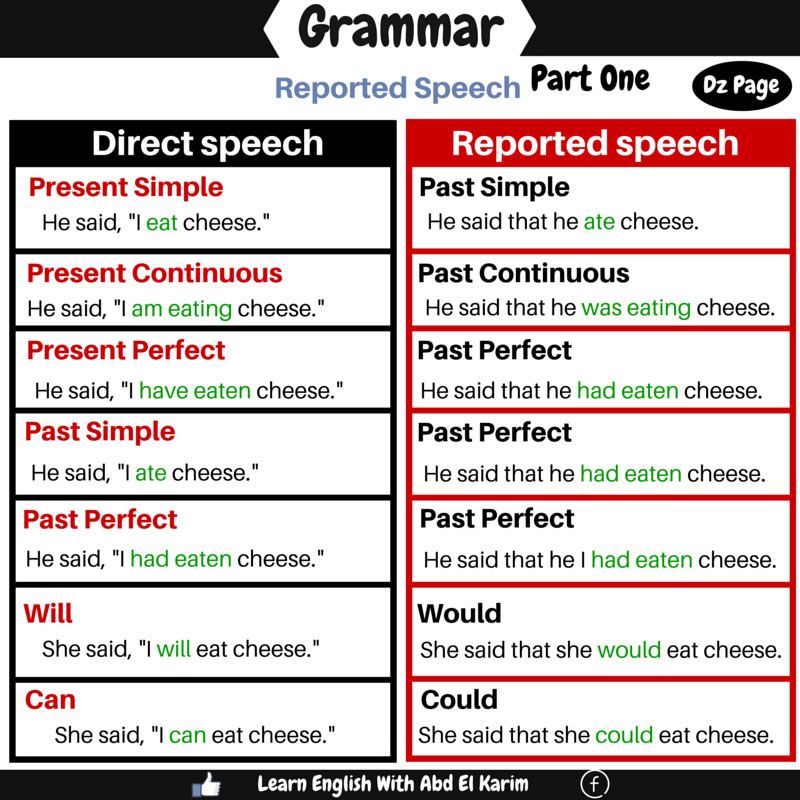 Don’t worry about memorizing these angles, though. The seasoned pros at Tires Plus are ready to help!
Don’t worry about memorizing these angles, though. The seasoned pros at Tires Plus are ready to help!Some conditions could result in less frequent tire alignments. If you don’t put many miles on your car—say, 6,000 or so in a year—you’re likely okay with a slightly broader tire alignment service time frame.
If you answered "yes" to any of our questions or can't remember the last time you had an alignment, schedule an appointment for an alignment check and service.
And then, relax. We're service people, not salespeople. That means you won’t have to deal with any hard sell. At your local Tires Plus, you’ll get tire alignment service, professional insight, and helpful tips from a skilled technician.
So head on in. We'll keep your ride on the straight and narrow.
Schedule
Alignment
Learn more about your car's alignment, why it's important to maintain, & signs you may be in need of an alignment service, from your friends at Tires Plus!
Read More
Alignment
You've heard wheel alignment is important, but do you know why? Learn what car wheel alignment is, when your car needs it, and why it matters, with Tires Plus!
Read More
LOAD 3 MORE
SHOWING 6 OF 12
Alignment
Learn more about your car's alignment, why it's important to maintain, & signs you may be in need of an alignment service, from your friends at Tires Plus!
Read More
Alignment
Learn what Advanced Driver Assistance Systems (ADAS) are and how to maintain them properly.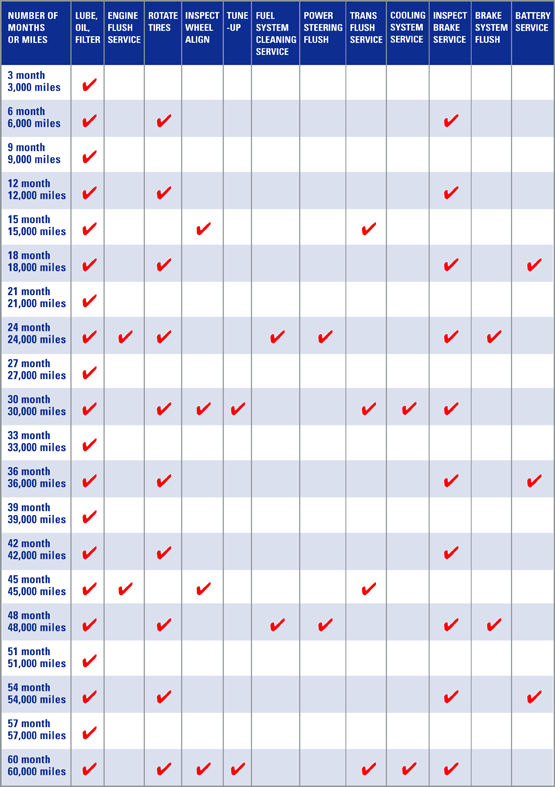 ADAS may help to improve your safety, but only if correctly calibrated.
ADAS may help to improve your safety, but only if correctly calibrated.
Read More
Alignment
You've heard wheel alignment is important, but do you know why? Learn what car wheel alignment is, when your car needs it, and why it matters, with Tires Plus!
Read More
{{storeNumber}}
{{storeName}}
{{link-icon "Call Us" mobileCallLink null "call-cta"}} {{link-icon "Directions" directions "_blank" "directions-cta"}}
{{address}}
{{city}}, {{state}} {{zip}}
{{#if activeFlag}} {{#ifCond mystore "or" myPreferredStore}} {{#ifCond storeType 'eq' "TPL"}}
*Call store for appointment {{phone}}
{{else}} {{#if onlineAppointmentActiveFlag }}
{{#if myPreferredStore}}
{{else}}
*Call store for appointment {{phone}}
{{/if}} {{/ifCond}} {{else}} {{#ifCond storeType 'eq' "TPL"}}
*Call store for appointment {{phone}}
{{else}}
Schedule Appointment {{#if onlineAppointmentActiveFlag}} {{else}}
*Call store for appointment {{phone}}
{{/if}}
{{/ifCond}} {{/ifCond}} {{else}}
*Temporarily Closed Due To: {{temporarilyClosedReason}}
{{/if}} {{#if isMilitaryStore}}
*This location is on an active US military base.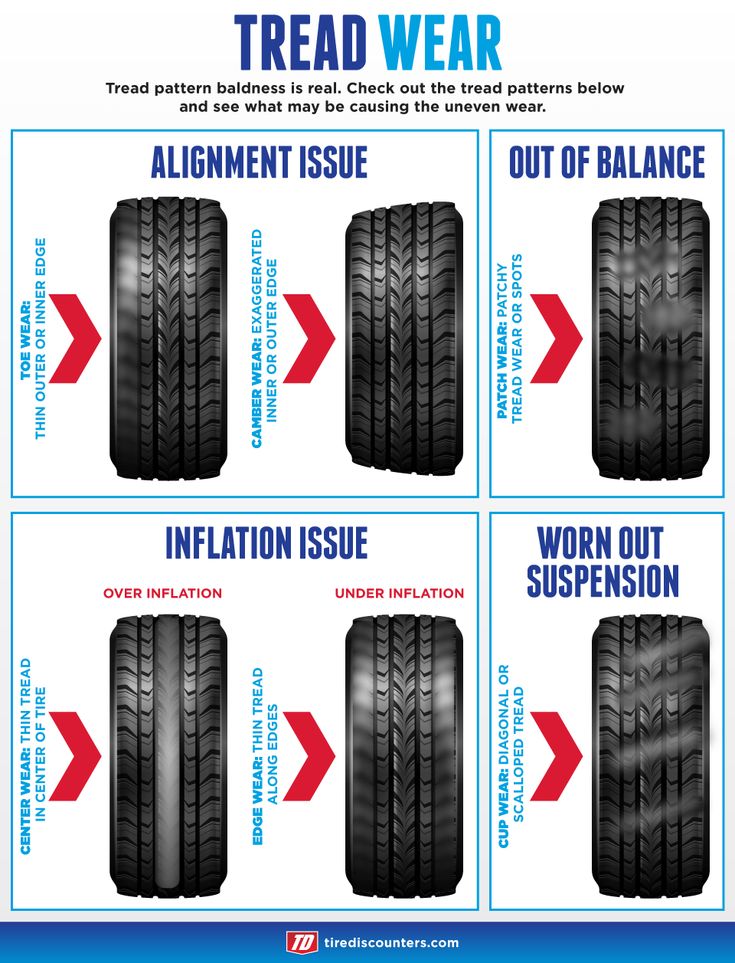 You may need military ID to access the location.
You may need military ID to access the location.
{{/if}}
{{#ifCond count 'eq' "3"}} Show More Stores {{/ifCond}}
You don’t have to go off-roading to cause alignment issues. The wheels on your car or truck will get out of alignment over time. Especially with speed bumps and potholes everywhere. Over time, those misaligned tire and wheel assemblies will impact your gas mileage (MPG), cause tires to wear out faster, and reduce drivability. That’s why it’s important to get your vehicle properly aligned at least once or twice a year as part of your basic auto maintenance. Here are some reasons why alignments are necessary, what causes misalignment, and how long it takes to get your vehicle realigned at Les Schwab.
Check out the article Do I Really Need an Alignment for a more in-depth look at the causes and parameters of a properly aligned vehicle. In it, you’ll learn about alignment measurements, tire angles, as well as some of the issues an out-of-alignment vehicle can cause.
In it, you’ll learn about alignment measurements, tire angles, as well as some of the issues an out-of-alignment vehicle can cause.
Everyday driving will cause your vehicle to go out of alignment. But some of the more common alignment-altering events include speed bumps, off-roading, potholes, rubbing along curbs, and carrying loads that are too heavy for your vehicle (or leaving too much weight in your car over a long period of time, such as household items). Other things that can impact your vehicle’s alignment include worn suspension parts, as well as when your vehicle is lifted or lowered. Check out our article on when to replace your shocks and struts.
Things that could indicate you need an alignment:
Avoid concrete dividers in parking lots as well as potholes and other road hazards.
If you notice one or more of your tires wearing more quickly than the others, your vehicle could be out of alignment.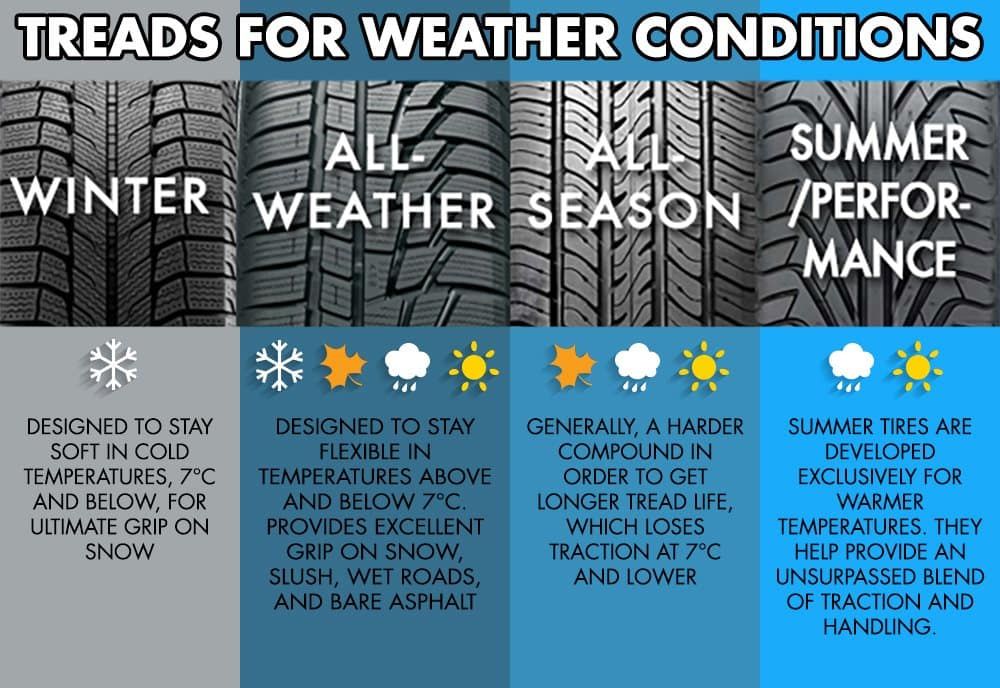 Stop by Les Schwab and we’ll check your tires for free.
Stop by Les Schwab and we’ll check your tires for free.
Does your vehicle drift or pull to one side? It could be time for an alignment.
If your steering wheel isn’t level when you’re driving straight, it might be a sign of a misalignment.
Anytime you buy new tires, get an alignment to prolong the life of your investment. The relatively low cost of an alignment can prevent your costly tires from wearing out too quickly.
A properly aligned vehicle handles correctly, achieves optimal fuel efficiency, and maximizes your tire life. When one of your tires is slightly out of alignment, it is essentially skidding. This makes that tire wear out faster. It’s also the reason your vehicle might pull or wander to one side. This can waste fuel, cost you money, and cause safety concerns. Plus, it can add unnecessary wear-and-tear to your car or truck.
When your vehicle needs to be realigned, the experts at Les Schwab will most often perform one of these common types of alignments. These include:
This is for vehicles that have adjustment capability at all four wheels. This is common on most front-wheel drive, all-wheel drive, passenger cars, SUVs, and crossover vehicles.
This is for vehicles that have an adjustment capability only available on the front axle. This includes larger trucks and SUVs with solid, rear axles.
Remember, getting your vehicle properly aligned will not put tread back on your tires. But it will help prevent further uneven tire wear. That’s why it’s vital you have your alignment checked at least once per year (twice per year is ideal). Check out our list of Alignment FAQs for some quick answers to common questions.
A wheel alignment service, once your vehicle is in our service bay, can take up to one hour.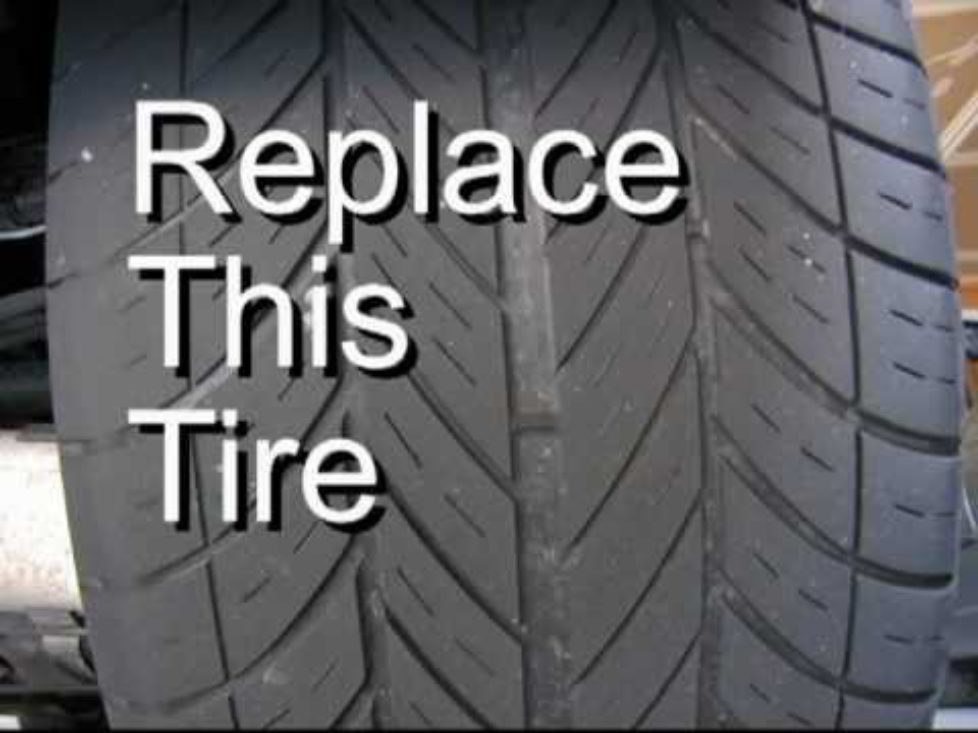 The time frame depends on the severity of the misalignment and whether or not your vehicle requires a thrust or four-wheel alignment. The pros at your local Les Schwab Tires can give you an accurate time estimate.
The time frame depends on the severity of the misalignment and whether or not your vehicle requires a thrust or four-wheel alignment. The pros at your local Les Schwab Tires can give you an accurate time estimate.
In addition to the alignment angles of your tire and wheel assemblies being measured and adjusted, you’ll also get a tire inspection, test drive before and after the alignment, steering and suspension inspection, and a detailed printed report.
The pros at your local Les Schwab can take a look at your vehicle’s alignment and let you know if you need any repairs. If everything looks good, it won’t cost you a thing. If you do need an alignment, we’ll get the job done right and send you home with our Best Alignment Value Promise, which includes a 30-day guarantee and a warranty on all labor costs.
Schedule an Appointment
0003Related materials
7 rubber signals: what the tire says about car problems
How do you know when tires are completely worn out and it's time to change them? Everything is simple.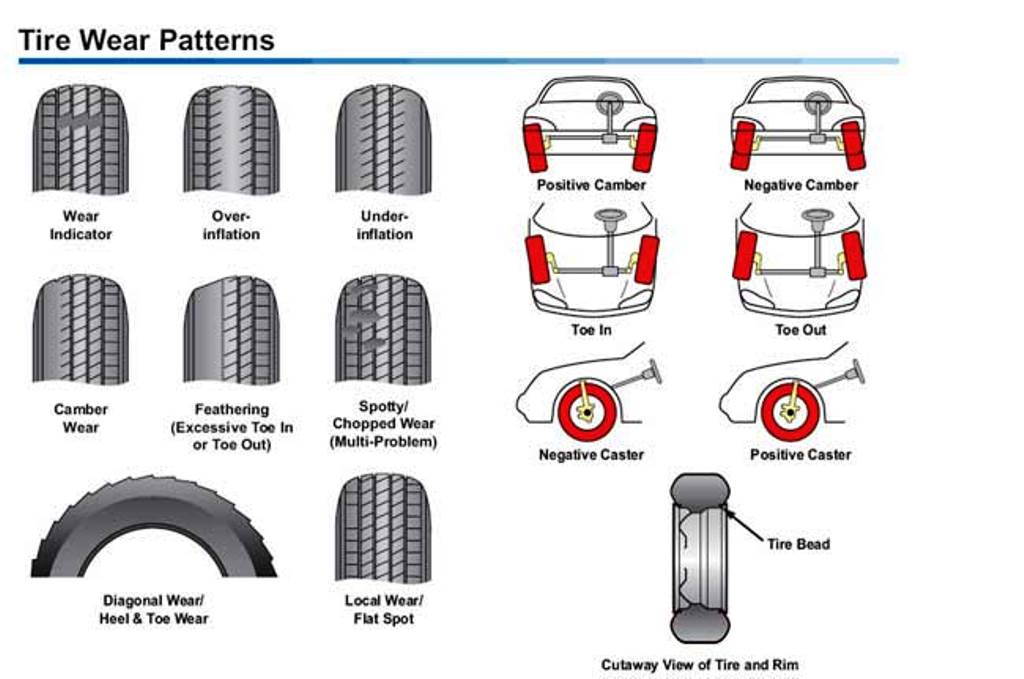 For summer tires, the limit is 1.6 mm of residual tread depth, and for winter (or all-season tires used in winter) - 4 mm. Modern summer tires can travel from 40,000 to 70,000 km, depending on driving style and vehicle characteristics. An average motorist rolls such a mileage on summer tires in 2-3 seasons. Moreover, wear implies not only a decrease in tread depth. For millions of cycles of deformation, the strength of the carcass and its adhesion to the layers of the rubber compound are violated. In short, every 2-3 years you should buy a new set of tires.
For summer tires, the limit is 1.6 mm of residual tread depth, and for winter (or all-season tires used in winter) - 4 mm. Modern summer tires can travel from 40,000 to 70,000 km, depending on driving style and vehicle characteristics. An average motorist rolls such a mileage on summer tires in 2-3 seasons. Moreover, wear implies not only a decrease in tread depth. For millions of cycles of deformation, the strength of the carcass and its adhesion to the layers of the rubber compound are violated. In short, every 2-3 years you should buy a new set of tires.
In case of irreparable damage to one of the tires and a relatively high total mileage of the kit, it is also worth considering replacing it. Well, or about buying at least a pair of new tires, which, for any type of drive, should be installed on the front axle. We put two tires back - the most decent of the remaining ones.
Many motorists drive only a few thousand kilometers a year. This does not mean that the tires will serve you for several decades. According to Russian requirements (GOST 4754-97), the service life of passenger car tires is 5 years from the date of manufacture. And for example, Continental recommends that all car tires (including the spare tire) older than 10 years old should be replaced with new ones. Therefore, with small runs, you can navigate for ten years. The date of manufacture of the tire is indicated on the sidewall. Usually it is an oval with four numbers. The first two are the ordinal number of the week in the year, the last two indicate the year.
This does not mean that the tires will serve you for several decades. According to Russian requirements (GOST 4754-97), the service life of passenger car tires is 5 years from the date of manufacture. And for example, Continental recommends that all car tires (including the spare tire) older than 10 years old should be replaced with new ones. Therefore, with small runs, you can navigate for ten years. The date of manufacture of the tire is indicated on the sidewall. Usually it is an oval with four numbers. The first two are the ordinal number of the week in the year, the last two indicate the year.
Related materials
How to change the car yourself - detailed instructions
Tires should be rotated periodically in accordance with the vehicle manufacturer's recommendations - information on this can be found in the owner's manual.
We can advise you to carefully use the tires and, most importantly, to store them correctly in the off-season. First of all, during storage, it is important to exclude direct sunlight from hitting the tires, which greatly age the rubber. Tires without rims should be placed vertically, and stacked on rims.
First of all, during storage, it is important to exclude direct sunlight from hitting the tires, which greatly age the rubber. Tires without rims should be placed vertically, and stacked on rims.
And before installing tires on a car at the beginning of the season, evaluate their condition. There should be no cracks in the tread and sidewalls. The tire should not be dry, it should remain rubbery and not look like baked plastic.
Related materials
Driving on badly worn tires - will I be fined or not?
Winter tires have a much shorter life span. They almost always fail due to the wear of the treadmill, because the tread of a new tire is 7–8 mm, and only 3–4 mm remain working height. If the tires are studded, then with such wear there are very few metal elements left, and the tire will not provide adequate safety when driving on a winter road. However, not only spikes, but also Velcro, with such a degree of wear, also lose most of their capabilities.
The real life of winter tires rarely exceeds 30,000 km. "Bald" winter tires without studs can be re-rolled in summer, but their grip on hot road surfaces will be very poor. This must be taken into account, especially when braking.
***
So: tires that have not yet worn out along the tread (that is, up to 1.6 mm tread depth for summer tires, 4 mm for winter tires) are changed either ten years after the date of issue, or when the rubber layer cracks tires or damage.
Our new video
New Vesta — how much will it cost?
3 interesting features of the updated Vesta. And 2 more - in the future
Updated Lada Vesta NG: what is the package?
Did you like the note? Subscribe and you will always be in the know!
Driving in Zen
News smi2.ru
With mileage, the technical condition of tires changes, which affects the performance of the car and traffic safety. Therefore, it is important to monitor the uniformity of wear of all tires, and also to prevent the operation of the vehicle, the residual height of the tire tread of which is lower than the minimum allowable. The task of preventing premature wear and destruction of tires is very complex and is associated with the ability to determine their types, accurately identify the cause that caused each specific tire failure. The increased wear of your car tires is influenced by many factors, or, to put it bluntly, violations. The fact is that many car owners do not follow the basic rules for maintaining their own or working car.
Therefore, it is important to monitor the uniformity of wear of all tires, and also to prevent the operation of the vehicle, the residual height of the tire tread of which is lower than the minimum allowable. The task of preventing premature wear and destruction of tires is very complex and is associated with the ability to determine their types, accurately identify the cause that caused each specific tire failure. The increased wear of your car tires is influenced by many factors, or, to put it bluntly, violations. The fact is that many car owners do not follow the basic rules for maintaining their own or working car.
This happens either due to ignorance or negligence. Due to the periodic and timely inspection of car tires, you can get complete and necessary information about the condition of the wheels and tires, the degree of wear, identify defects that are dangerous for traffic safety, determine the causes of tire wear and the features of car operation.
In addition to safety, tire condition affects handling, driving dynamics and fuel consumption . The latter is especially important for trucks and car owners with high daily mileage. Some tire manufacturers claim in their flyers that their tires will not only last longer, but will also save fuel. Let's see how tires really affect a car's fuel consumption. In a truck, this is of course more noticeable than in a passenger car, due to the large number of wheels and high loads. The rolling resistance of an entire vehicle consists of a whole list of resistances: air resistance, overcoming inertia forces during acceleration, internal resistance of engine and transmission components, and tire resistance. We will not dwell on all these factors and focus on tires.
The latter is especially important for trucks and car owners with high daily mileage. Some tire manufacturers claim in their flyers that their tires will not only last longer, but will also save fuel. Let's see how tires really affect a car's fuel consumption. In a truck, this is of course more noticeable than in a passenger car, due to the large number of wheels and high loads. The rolling resistance of an entire vehicle consists of a whole list of resistances: air resistance, overcoming inertia forces during acceleration, internal resistance of engine and transmission components, and tire resistance. We will not dwell on all these factors and focus on tires.
The total rolling resistance of tires is also made up of several components. Contrary to popular belief, tire friction on the road surface is only 5%. A little more (approximately 15%) falls on air resistance . The lion's share of the energy expended (about 80%) is spent on tire deformation . If the tire is rolled along the road with no load at all, then before stopping, it will move for a long time.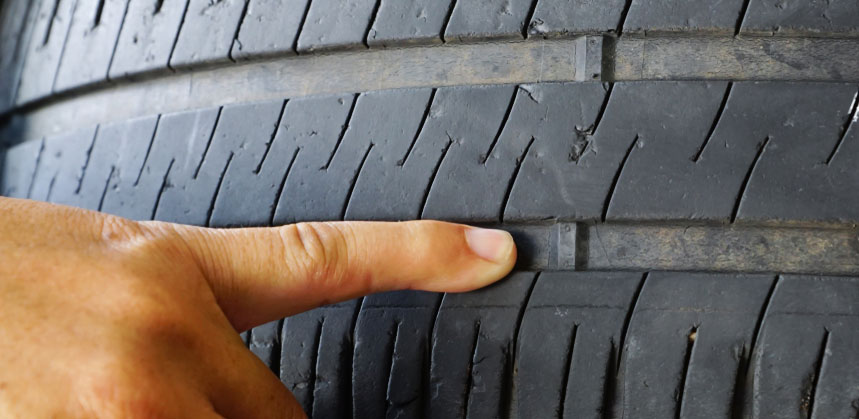 But if the tire is loaded so that its lower part begins to deform (compress), after the initial impulse it will stop very quickly. This clearly demonstrates how much energy is spent on the constant deformation of the tires.
But if the tire is loaded so that its lower part begins to deform (compress), after the initial impulse it will stop very quickly. This clearly demonstrates how much energy is spent on the constant deformation of the tires.
Thus, car owners may want to buy tires that will deform minimally, and therefore create less rolling resistance. Now in the market such an option is quite possible to find. As a rule, these are inexpensive budget-class tires. A stiffer carcass, although it gives some fuel economy, at the same time can present an unpleasant surprise in the form of a tire explosion. You just need to run into any object with sharp edges (stone, piece of iron, etc.). By the way, a similar situation can happen with premium tires. Some drivers, mostly trucks, inflate their tires on purpose to save fuel, without realizing that uneven wear will appear.
The chassis geometry of the also has a significant impact on fuel consumption. Even minor deviations entail extra costs.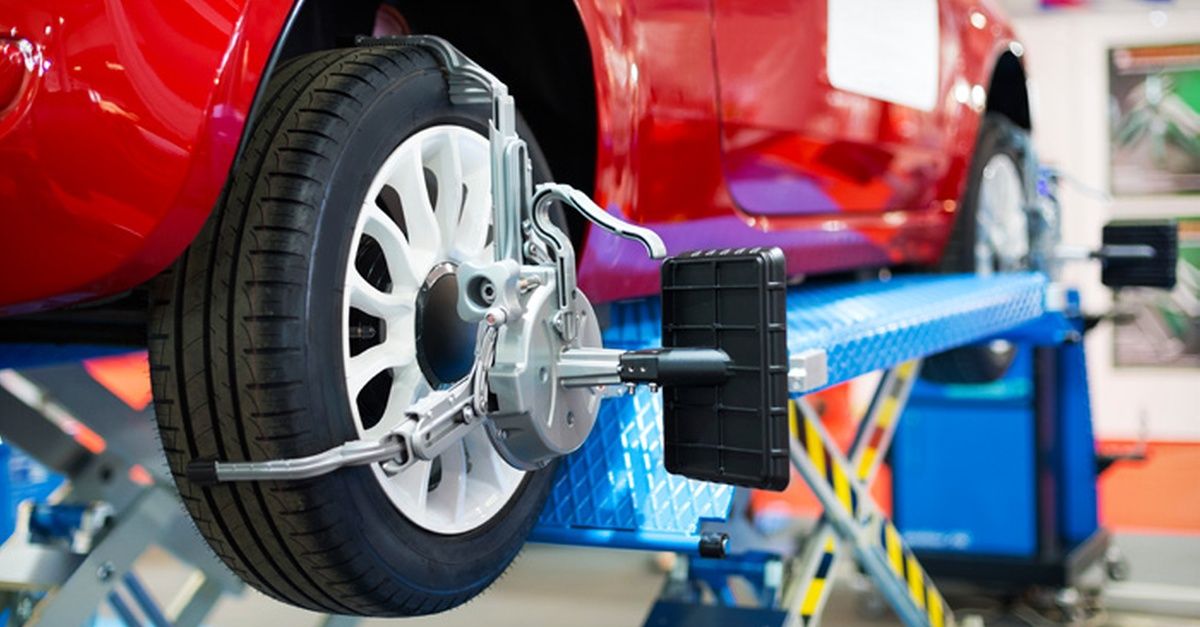 Firstly, tires wear out faster, and secondly, fuel burns more. When the wheels, figuratively speaking, go in different directions, additional energy is spent on their "drag". For example, if at one meter the wheel “leaves” only 2.5 mm, then at a kilometer it turns out that the wheel will “drag” to the side by 2.5 m. 2.5 kilometers at full load.
Firstly, tires wear out faster, and secondly, fuel burns more. When the wheels, figuratively speaking, go in different directions, additional energy is spent on their "drag". For example, if at one meter the wheel “leaves” only 2.5 mm, then at a kilometer it turns out that the wheel will “drag” to the side by 2.5 m. 2.5 kilometers at full load.
Normal tire wear
Tire inspection provides you with information about the condition of tires and wheels, how the car is used, possible defects, and driving style. So, for example, a sporty driving style leads to a different tire wear pattern than a relaxed one. For a correct assessment, it is necessary to inspect all the wheels. This is especially evident in the example of a passenger rear-wheel drive car, since the load is distributed differently between the driving and steered wheels in it.
Tire wear as a function of air temperature
Tire wear as a function of driving speed
While driving, tire wear is determined by measuring the remaining tread height.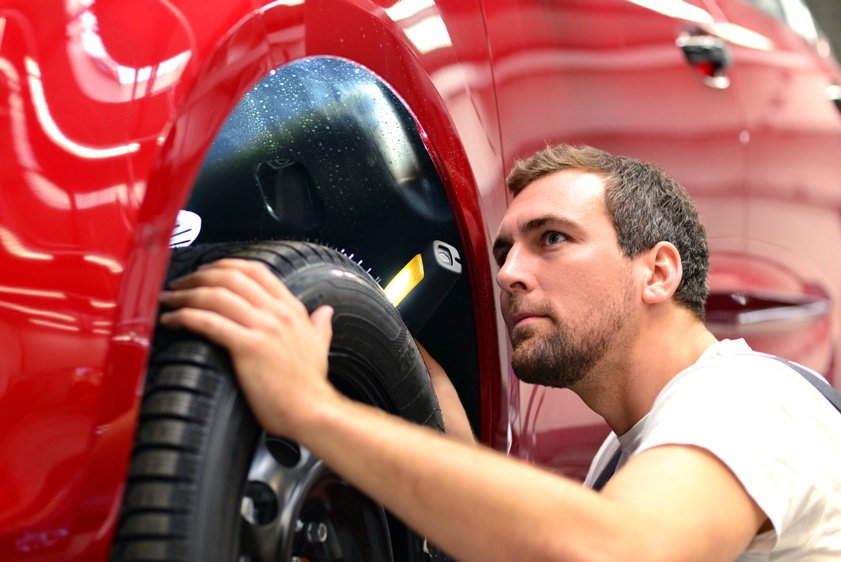 Tire wear must be uniform over the entire circumference; when the minimum tread height is reached, the tire is considered completely worn out and must be replaced. Tire wear is primarily determined by driving style. Hard acceleration and braking wears out the tire faster than steady motion.
Tire wear must be uniform over the entire circumference; when the minimum tread height is reached, the tire is considered completely worn out and must be replaced. Tire wear is primarily determined by driving style. Hard acceleration and braking wears out the tire faster than steady motion.
Drive and steer wheels have different wear patterns due to different loads. Steered wheels wear more on the sides, since it is on this part of the tire that the main load in the turn occurs. Tires on drive wheels wear more in the middle , since it is this part of the tire that contacts the asphalt and transmits the rotation of the wheel to the road. On vehicles with front-wheel drive, the wear is "cumulative" - in this case, the entire tire wears out evenly and its central part and sides.
One-sided wear (possible reduction in wear from 15% to 30%) - occurs more often than others, since there are several reasons for its occurrence. One-sided tire wear can be caused by an error in suspension geometry.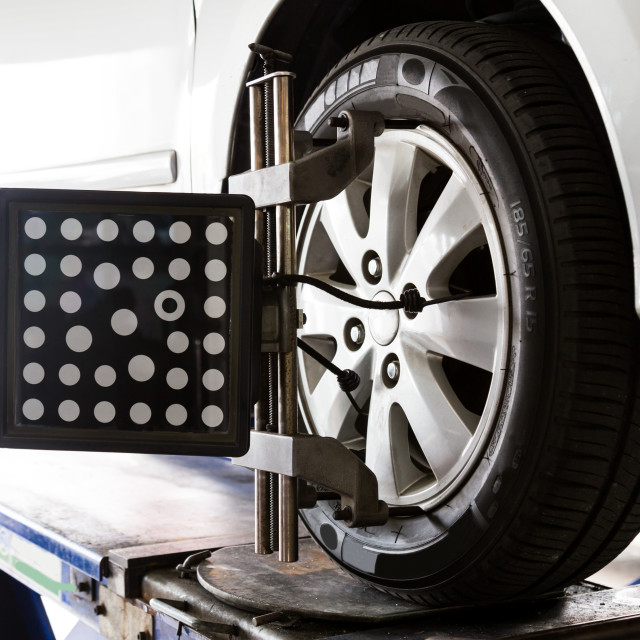 To determine the cause in this case, it is necessary to check the toe-in and camber. Wear on the outer side of the tire can be caused by excessive positive toe or camber . Wear on the inside of the tire, on the other hand, causes excessive negative toe or camber. Driving with zero camber results in even but increased tire wear. In addition, it increases the tire's rolling resistance and increases fuel consumption . In addition to the tires of the steered axle, tires of other axles can also be subject to one-sided wear - again due to problems with the geometry. This is either a lack of alignment, or deformation of the axes themselves. On steering tires for tractors, one-sided wear may appear due to the operating conditions of the vehicle. Another reason is cornering at high speeds. To prevent one-sided wear, you need to monitor the condition of the chassis, periodically check the geometry and abandon the aggressive driving style.
To determine the cause in this case, it is necessary to check the toe-in and camber. Wear on the outer side of the tire can be caused by excessive positive toe or camber . Wear on the inside of the tire, on the other hand, causes excessive negative toe or camber. Driving with zero camber results in even but increased tire wear. In addition, it increases the tire's rolling resistance and increases fuel consumption . In addition to the tires of the steered axle, tires of other axles can also be subject to one-sided wear - again due to problems with the geometry. This is either a lack of alignment, or deformation of the axes themselves. On steering tires for tractors, one-sided wear may appear due to the operating conditions of the vehicle. Another reason is cornering at high speeds. To prevent one-sided wear, you need to monitor the condition of the chassis, periodically check the geometry and abandon the aggressive driving style.
Bilateral and central wear (possible reduction in mileage from 5% to 10%) appear for the same reason - tire pressure mismatch.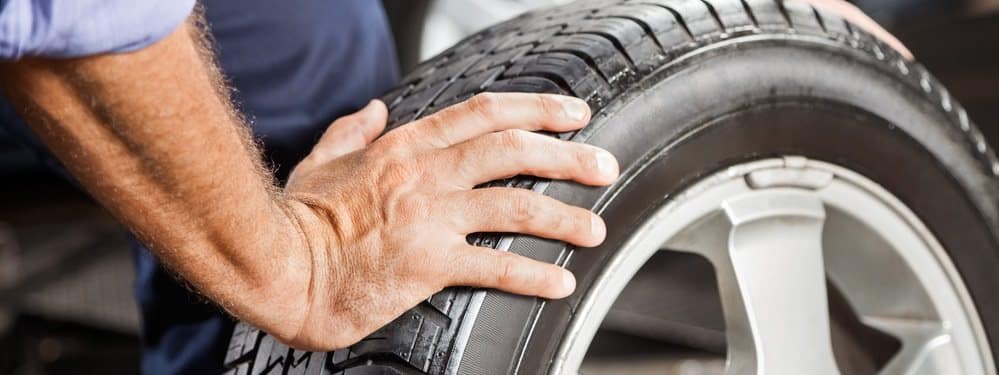 When the pressure is below normal, the tire begins to wear more at the edges, and bilateral wear is obtained. The same thing happens during overload - the tire, even with normal pressure, rides as if it were lowered. Fans of pumping tires get a different result: the load on the contact patch is not distributed evenly, but closer to the center, which means that the tire wears out faster in the central part of the tread. Anyone who monitors tire pressure and does not overload the car does not encounter such problems.
When the pressure is below normal, the tire begins to wear more at the edges, and bilateral wear is obtained. The same thing happens during overload - the tire, even with normal pressure, rides as if it were lowered. Fans of pumping tires get a different result: the load on the contact patch is not distributed evenly, but closer to the center, which means that the tire wears out faster in the central part of the tread. Anyone who monitors tire pressure and does not overload the car does not encounter such problems.
Multiple wear around the circumference
Patchy wear (possible 10% to 20% reduction in mileage) is a direct result of imbalance. It is especially characteristic of steering axle tires, but can appear on all axles. If such wear has become visible to the naked eye, the problem is obvious. Balancing will correct the situation, but only partially: a wheel that has lost its roundness will wear out more intensively. Therefore, it is more expensive to ignore balancing when buying and installing new tires.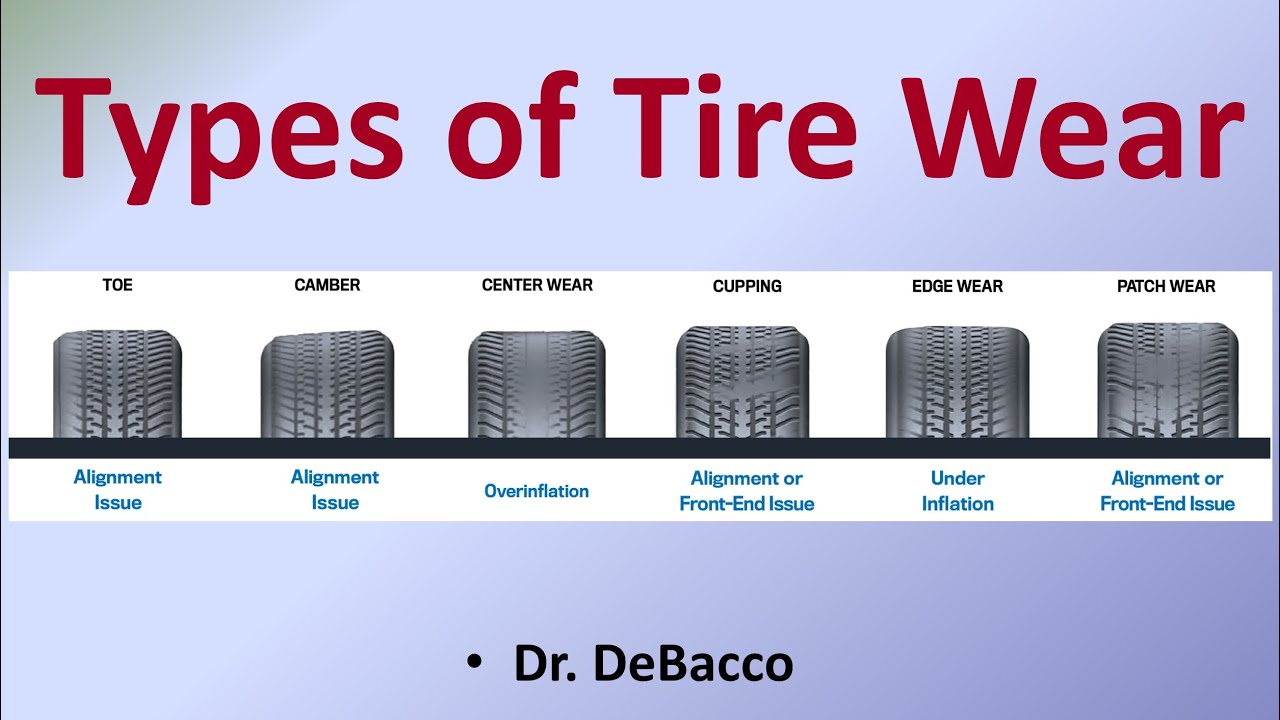 Repeated wear spots around the circumference of the tires can cause suspension failure (arms, dampers, springs). After diagnosing and repairing the suspension, the tire must be replaced, since this wear pattern no longer ensures its uniform rotation, and the wheel will “beat”.
Repeated wear spots around the circumference of the tires can cause suspension failure (arms, dampers, springs). After diagnosing and repairing the suspension, the tire must be replaced, since this wear pattern no longer ensures its uniform rotation, and the wheel will “beat”.
Spot wear
Spot wear in one spot is the result of emergency braking with a locked wheel. The uniformity of rotation of the wheel in this case is also broken and the tire will have to be replaced. If you leave the car for a long time in the parking lot, then there is a risk of flat areas on the tires, which then during the movement will cause the wheels to vibrate. It is recommended to increase the pressure in the tires if you leave the car for a long time. A similar effect can also be caused by stopping the car after intense sports driving - heated tires are easily deformed at the points of contact with the road surface and practically “freeze” in this state. This defect is easy to fix - after warming up the tires, they will again acquire a round shape.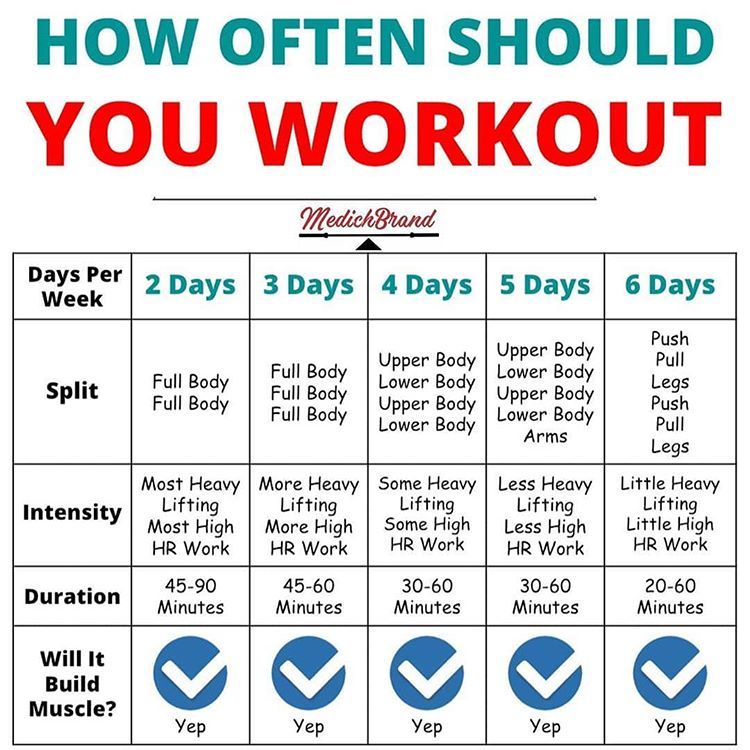
Comb (saw) wear (possible reduction in mileage from 10% to 20%) is a form of uneven wear. It can often be seen on drive axle tires with a block tread pattern. It is caused by the fact that during the movement the tire is deformed - at the point of contact with the road, the tread is pressed inward (the blocks are crushed and dragged along the road surface), and as the wheel rotates, it straightens again. This leads to the fact that the tread wears more on the front edge than on the back. The result of this wear is an increase in tire rolling noise. It is impossible to avoid the appearance of comb wear, but with the help of permutations, its negative effect on tire mileage can be leveled. Drivers can also influence the situation: if you step on the gas pedal as smoothly as possible, comb wear will be minimal. To even out this wear, tires are usually swapped, as tires on a non-drive axle are more susceptible to this wear. Low tire pressure also increases sawtooth wear.